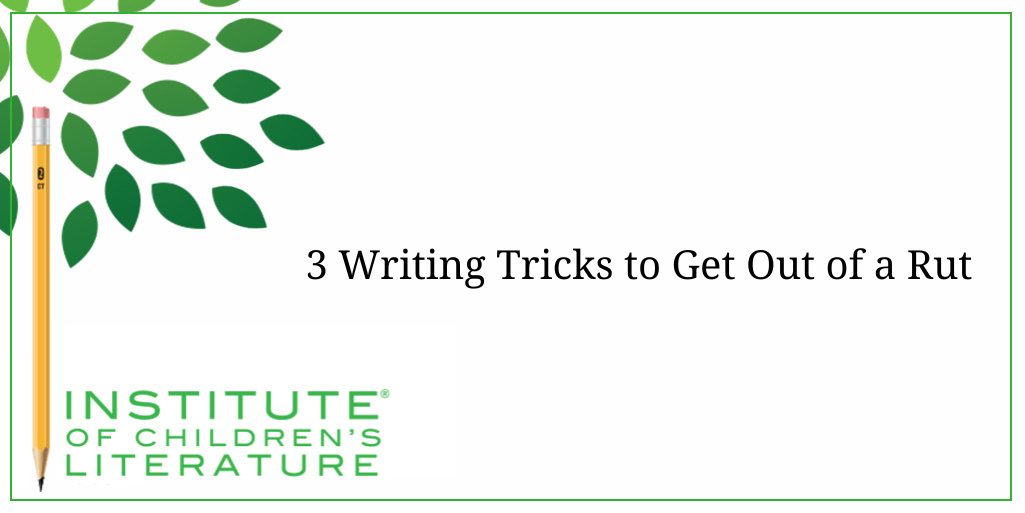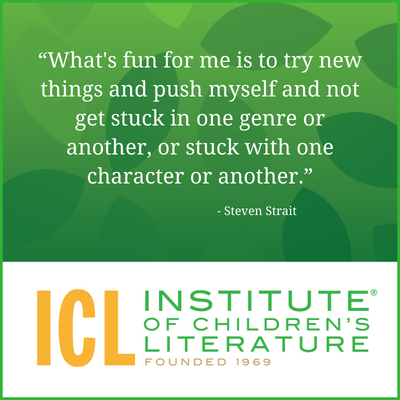
5 Ways Writers Can Prep for 2025 Goal Setting
Before we roll on to the new writing year, let’s harness our optimism for the blank slate before us and prepare for our 2025 Goal Setting just for writers.

We teach our students how to write and get published!
View our Course Catalog >
One problem many writers fall into is writing ruts. We do the same thing the same way. This hits some writers so hard that even popular, professional writers can end up writing very similar books repeatedly. With very popular writers, publishers aren’t even always opposed to getting very similar books because they know readers will enjoy revisiting these characters and very similar plots over and over. But most of us don’t want to end up creating cookie-cutter books, so one thing to consider in the days ahead is expanding your writing options. Here are three writing tricks get you out of those ruts.
Sometimes we can look over our stories or books and think we’re already creating plenty of diverse works. But it’s always worthwhile to consider all the elements of each work and ask yourself, “Am I relying on this too much?” For example, most middle grade novels are written in third person and that does tend to be the easiest viewpoint to sell.
Third person is when your main character is referred to as he, she, or they in the narration:
Joel raised his head and looked around him, stunned to find nothing he recognized. Nothing at all.
If this were written in first person, it would read like this:
I raised my head and looked around. There was nothing I recognized. Nothing at all.
And if this were written in second person (which is quite rare), it would read like this:
You raise your head and look around. You see nothing that you can recognize. Nothing at all.

Still, if you’ve stuck with one specific viewpoint for every one of your books, one reliable writing trick is to change things up a little and consider whether a different viewpoint might give you a whole new way of telling a story. Changing viewpoint may seem simple on the surface, but it tends to make you change everything about how you view that character as you write, and that can offer you insights that make for deeper, and more engaging writing.
Viewpoint isn’t the only bit you might consider diversifying. Tense can also offer you new ways into a story. Most fiction (as in nearly all) is written in past tense. That means the “now” of the story had actually happened in the past. Consider the quote I used above about Joel. This is written in past tense and stayed in past tense even when I changed to first person and then to second.
Past tense writing is so common that it can be really difficult to change. But that very act of doing something so difficult will make you look closer at your writing and at what is happening, why it’s happening, and how it’s happening. When you do something that requires this much attention to detail on a sentence-by-sentence basis, it drags you deeper into your own work.
So, how could Joel’s experience change if written in present tense?
Joel raises his head and looks around. He recognizes nothing about this shadowy room. He recognizes nothing through the grimy window. He recognizes nothing at all.
There is an immediacy in present tense writing that can be very appealing for a writer, but it is not without challenge. Still, even if you don’t ultimately decide to write a book in first person or write a short story in present tense, it can be a terrific writing exercise to try rewriting scenes in a different viewpoint or a different verb tense. This writing trick might even become a daily writing exercise to “get you into” a writing frame of mind while also driving you deeper into your work in progress because of the attention you must give everything when you make these kinds of changes.
Mechanics will often offer you opportunities to try new things, but there are more big picture things to consider as well. For example, do you usually write male main characters or female? Because I write both for kids and for adults, my answers to this question tend to change when I change age.
Most of my kids’ books had male main characters, though not all. My most recent series, featuring misfit pirates, had a female main character. However, my books for adults are cozy mysteries, and they all have female main characters. If I wanted to try a totally different kind of challenge in books for grown-ups, I could try writing a mystery with a male main character.
If I dig still deeper into my own writing ruts, I admit my kid books are nearly all action adventures and my adult books are cozy mysteries. Now, the kid books have also been period pieces or science fiction or mysteries or school stories, but they’ve also been action adventure because that’s what I loved reading as a kid and what I still enjoy reading. But I remember also loving scary stories, and I still want to try writing that. There are action-adventure elements in a lot of scary kid fiction, so it wouldn’t be too big of a leap, but might be just a big enough leap to be interesting.
As for my writing for adults, I could switch up and write a male main character or I could switch up the genre. Right now, I write cozy mysteries, but again, I do love reading a good ghost story, so I’m tempted to try that. Going places I haven’t gone before would help me be more aware of how I write, the things I fall back on, and push me out of my comfort zone.
There is a kind of fresh energy in trying something new, whether it’s a huge change or a smaller one. You can do it in big projects or in small ones. I’m a huge believer in the value of small projects: flash fiction and other short stories can be a great place to switch up what you’ve done and try something new without plunging into the deep end. As you look over what you’ve accomplished in the past year, look also for patterns and possibilities for branching out in new directions as you press ahead.
The adventure lies in the challenge, and nothing keeps you awake and energized like an adventure.
With over 100 books in publication, Jan Fields writes both chapter books for children and mystery novels for adults. She’s also known for a variety of experiences teaching writing, from one session SCBWI events to lengthier Highlights Foundation workshops to these blog posts for the Institute of Children’s Literature. As a former ICL instructor, Jan enjoys equipping writers for success in whatever way she can.

Before we roll on to the new writing year, let’s harness our optimism for the blank slate before us and prepare for our 2025 Goal Setting just for writers.

Writers can be thin-skinned when it comes to getting feedback on their work. Let’s look at 4 ways to positively deal with constructive criticism!

Rejection is part of the territory when it comes to being a writer. Today we offer reflection for writers to help redirect your efforts after a rejection.
1000 N. West Street #1200, Wilmington, DE 19801
© 2024 Direct Learning Systems, Inc. All rights reserved.
1000 N. West Street #1200, Wilmington, DE 19801
© 2024 Direct Learning Systems, Inc. All rights reserved.
1000 N. West Street #1200, Wilmington, DE 19801
© 2024 Direct Learning Systems, Inc. All rights reserved.

1000 N. West Street #1200, Wilmington, DE 19801
© 2025 Direct Learning Systems, Inc. All rights reserved.

1000 N. West Street #1200, Wilmington, DE 19801
©2025 Direct Learning Systems, Inc. All rights reserved. Privacy Policy.
1 Comment